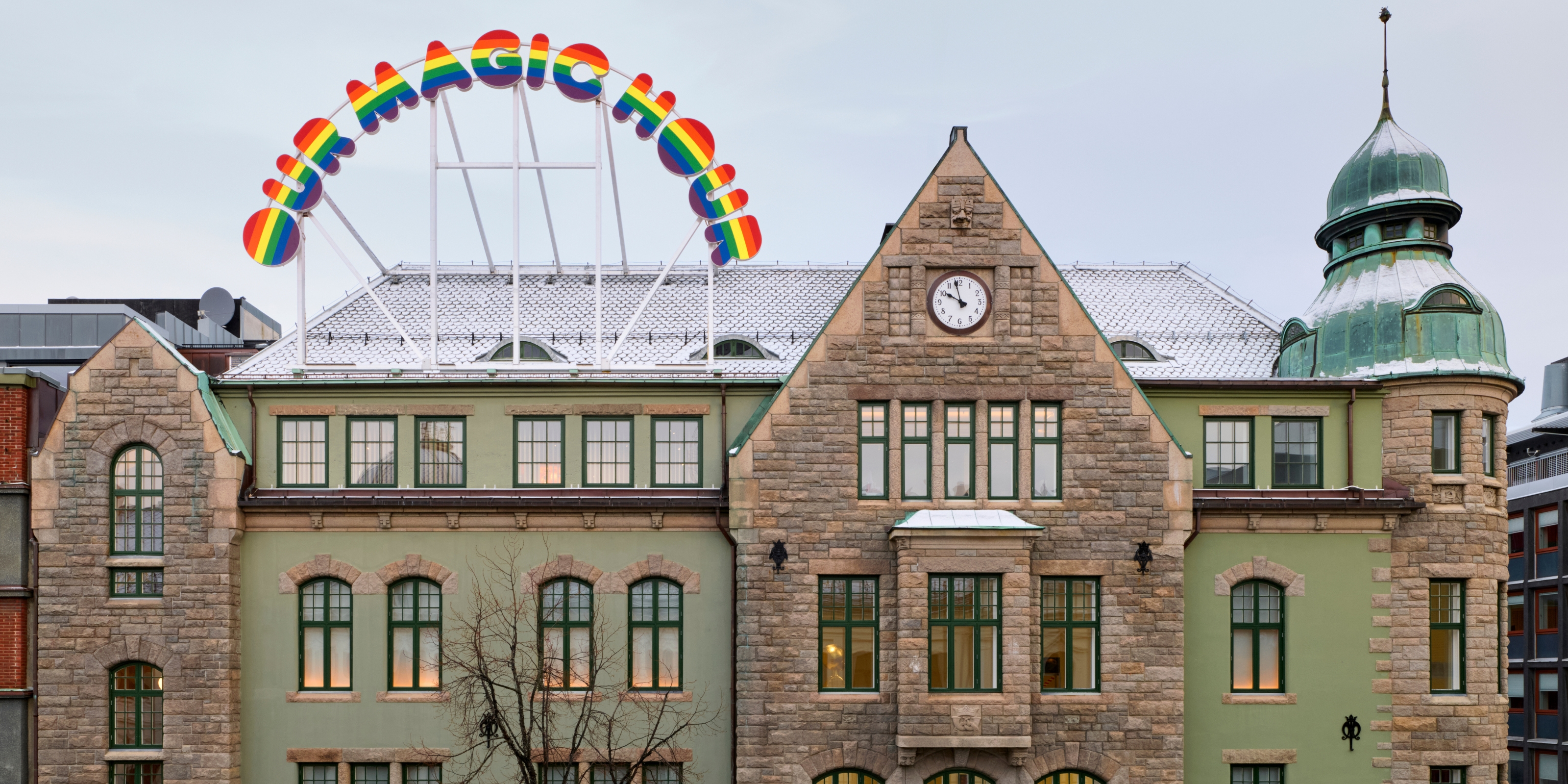
Filled with scenic views of its namesake fjord and a time-traveling mixture of Gothic, Romanesque, and wooden architecture, Trondheim, Norway's third-largest city and "knowledge capital", is a rising destination for travelers interested in getting a taste of authentic Scandinavian innovation. With the unveiling of modern and contemporary art museum PoMo, which opened its doors to the public in the heart of the cultural quarter last week, a new chapter in its centuries-spanning history has only just begun.
Dreamt up as a world-class hub for modern and contemporary art by Trondheim natives Monica and Ole Robert Reitan, who funded the project, this newly launched institution is more than yet another platform for painting, sculpture, photography, installation, and design exhibitions.
To drive PoMo's vision forward is a desire to make such creative expressions "accessible to everyone," explained the founders, who manifested their commitment to building a collection that isn't only "relevant, original, and of high international quality", but also representative of a "broad diversity of artists, across gender and origin" under the leadership of Director Marit Album Kvernmo and Curator & Exhibition Producer Rasmus Thor Christensen. Among the confirmed names are those of genre-bending figures such as Philippe Parreno, Louise Bourgeois, Ugo Rondinone, Anne Imhof, and Simone Leigh.
Still, the promising range of globally sourced works set to land in Norway for the first time across its permanent and annual presentations isn't but one of the notable aspects of PoMo. Expanding across 4,000 square meters over five floors, this imaginative new arts hub is the first museum to bear the signature of disruptive French-Iranian architect and interior designer — and previous Hidden Trails protagonist — India Mahdavi, who worked alongside Norwegian architect Erik Langdalen on its realization.
Housed within Trondheim's former post office building, a Grade I listed, 1911 masterpiece courtesy of Norwegian Art Nouveau architect Karl Norum, PoMo oozes with the contagiously uplifting, surreal energy that has made Mahdavi one of the most inspiring voices in contemporary interior design.
Her suggestive, color- and shape-driven conception of this world is instantly tangible as visitors make their way through the eye-catching, fuchsia metal and glass portal that serves as the museum's door into its main hall: covered in white and punctuated by Ionic-style columns and arches, the brightly lit room offers a striking stage to the colossal sculptural explorations of acclaimed Austrian artist Franz West and German sculptor Katharina Fritsch — the only other touches of color between its terrazzo floors and immaculate walls.
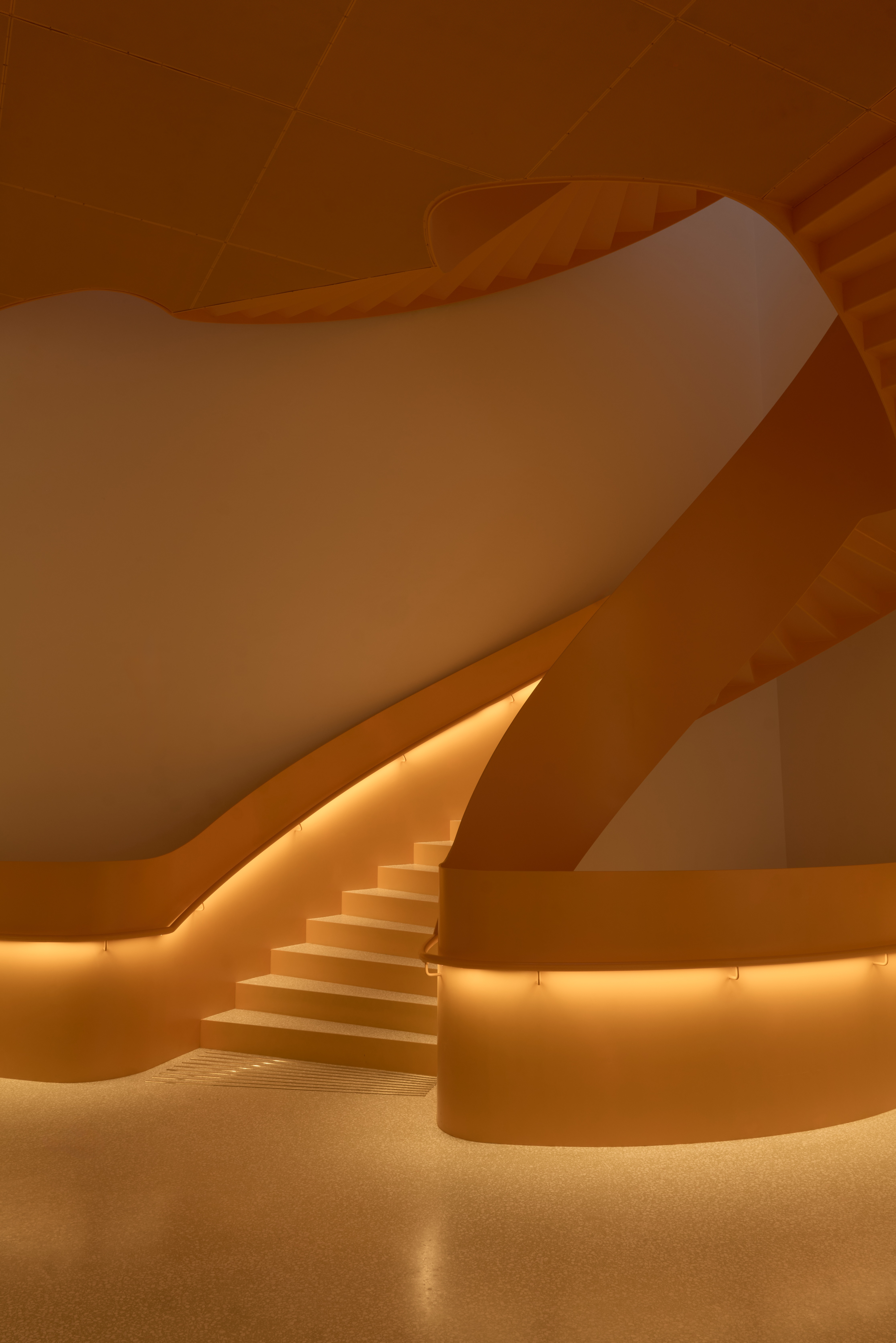
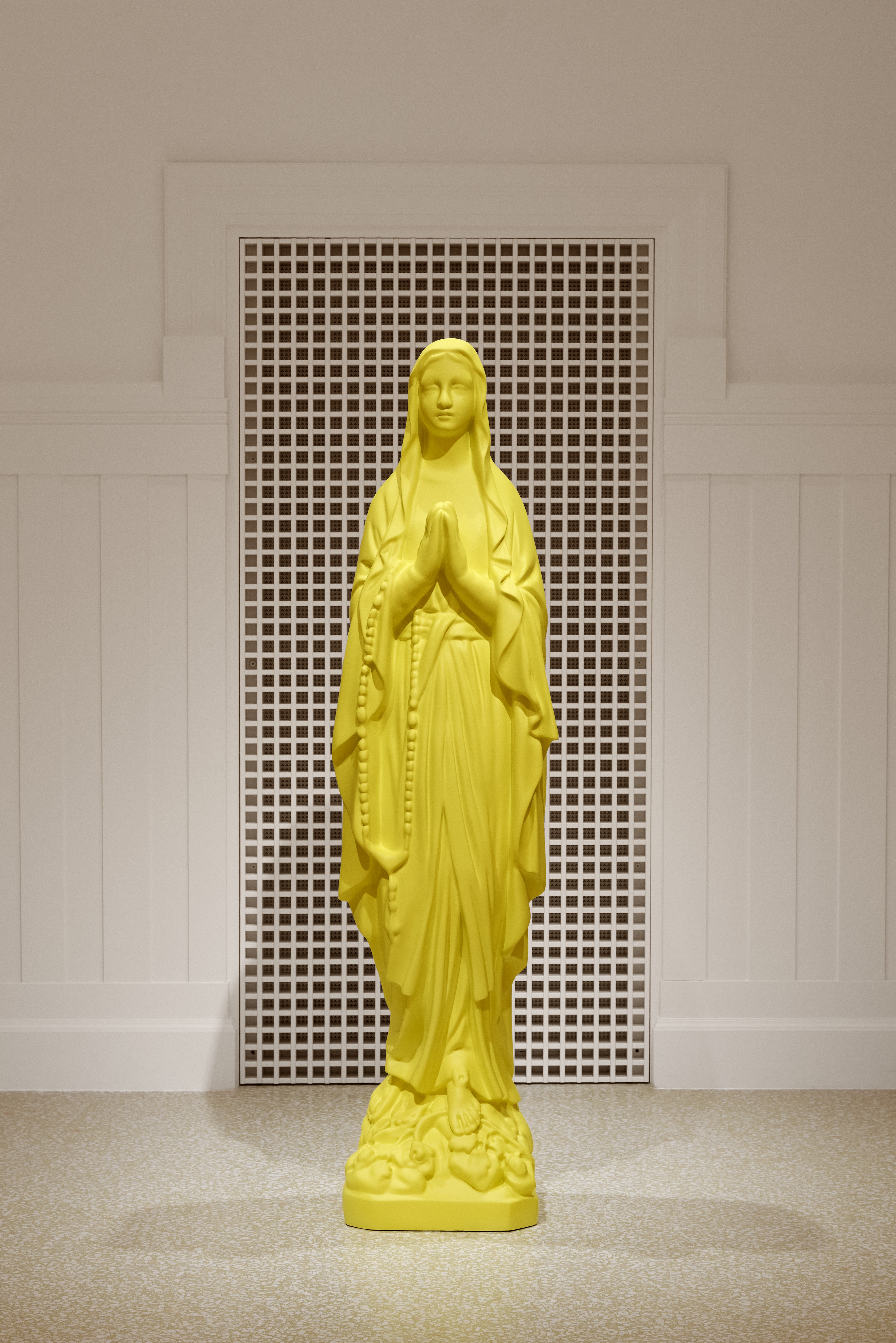
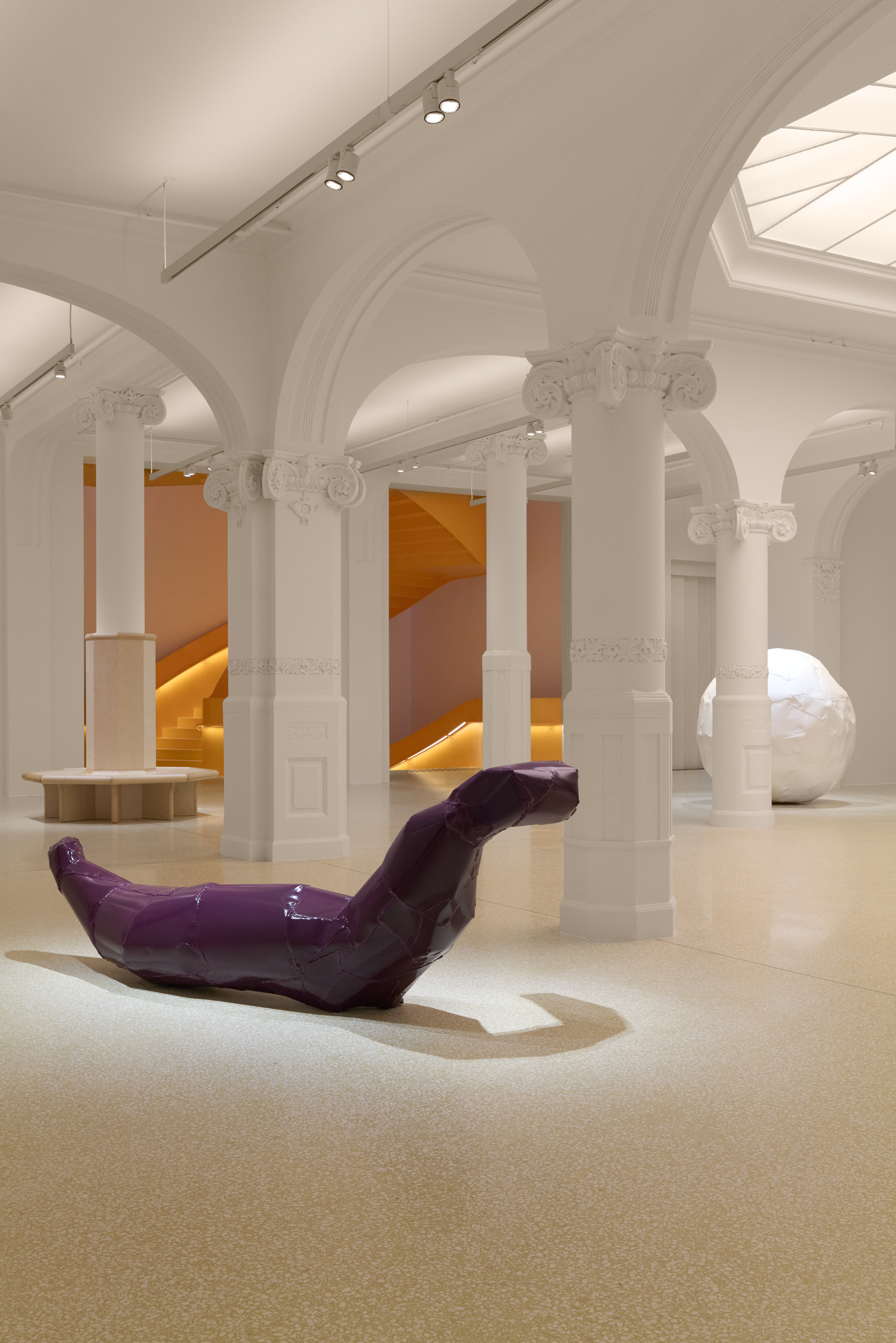
But it's in the adjacent, in-between spaces that the designer's and Langdalen's genius truly comes to the fore. In the baby pink-shaded, jewel box-like PoMo shop, industrial style gets a dreamy makeover in a romantic color-drenching exercise. Meanwhile, along the twisting, mandarin steel staircase that leads to the higher grounds, conceived by the Norwegian architect, visitors are absorbed in a cinematic dimension — its spiraling structure simultaneously hinting at sci-fi and the atmospheres of a noir-era psychological horror film.
Suspense, wonder, and surprise are equally present throughout PoMo's three gallery spaces, located on the first, second, and third floors, also spilling into its basement project room and private lounge, tucked away on the fourth floor. However, together with the conservation of its original architecture, no other objective was more pivotal to their development than eliciting emotional comfort, or to put it in Nordic terms, "a sense of hygge".
A family museum, at PoMo "the relationship of the spaces in the building was orchestrated through the prism of hospitality — different from a restaurant, different from a hotel — yet complementing both the experiences of sharing and intimacy, creating a sense of permeability and a place where visitors can feel welcome," Mahdavi explained.
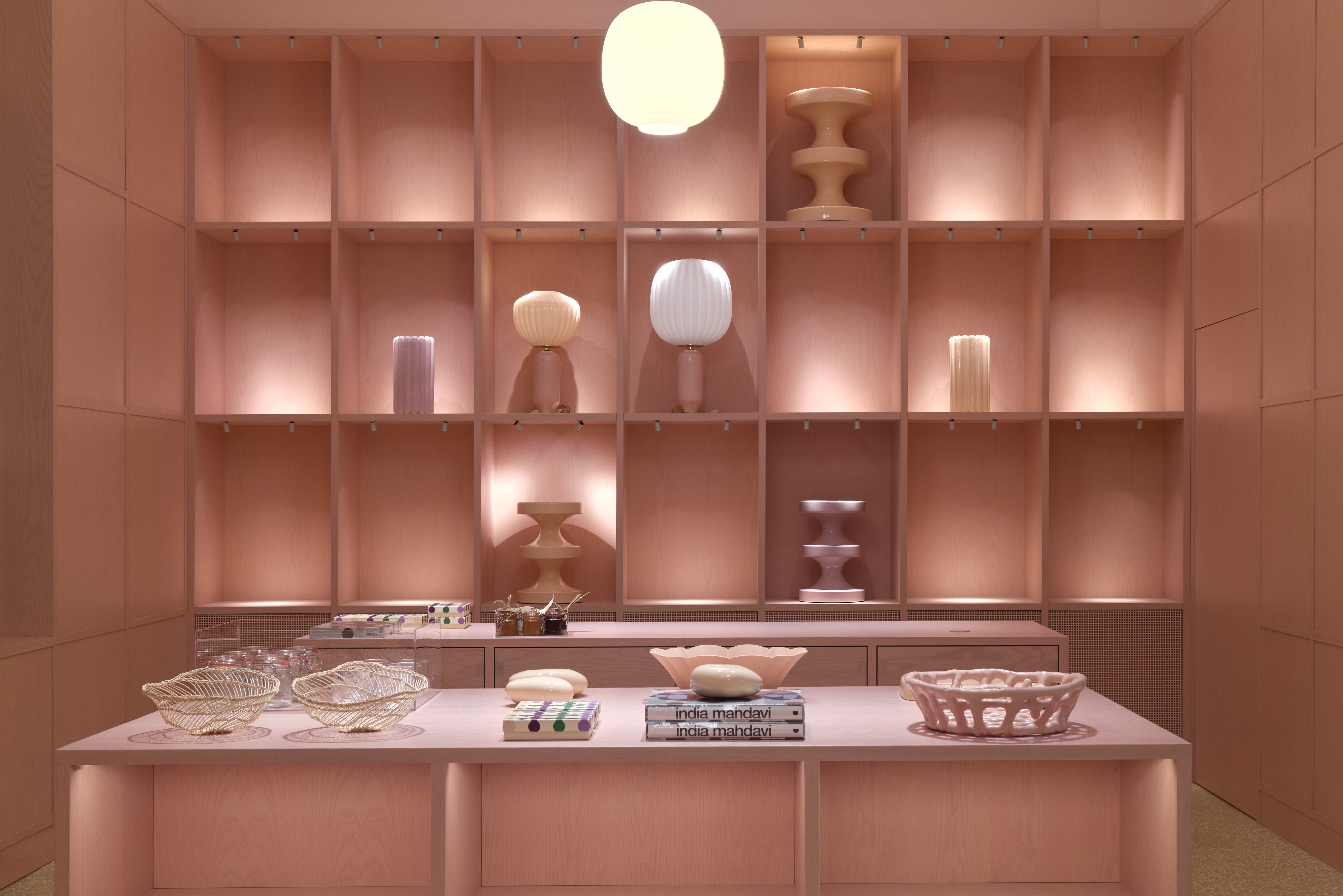
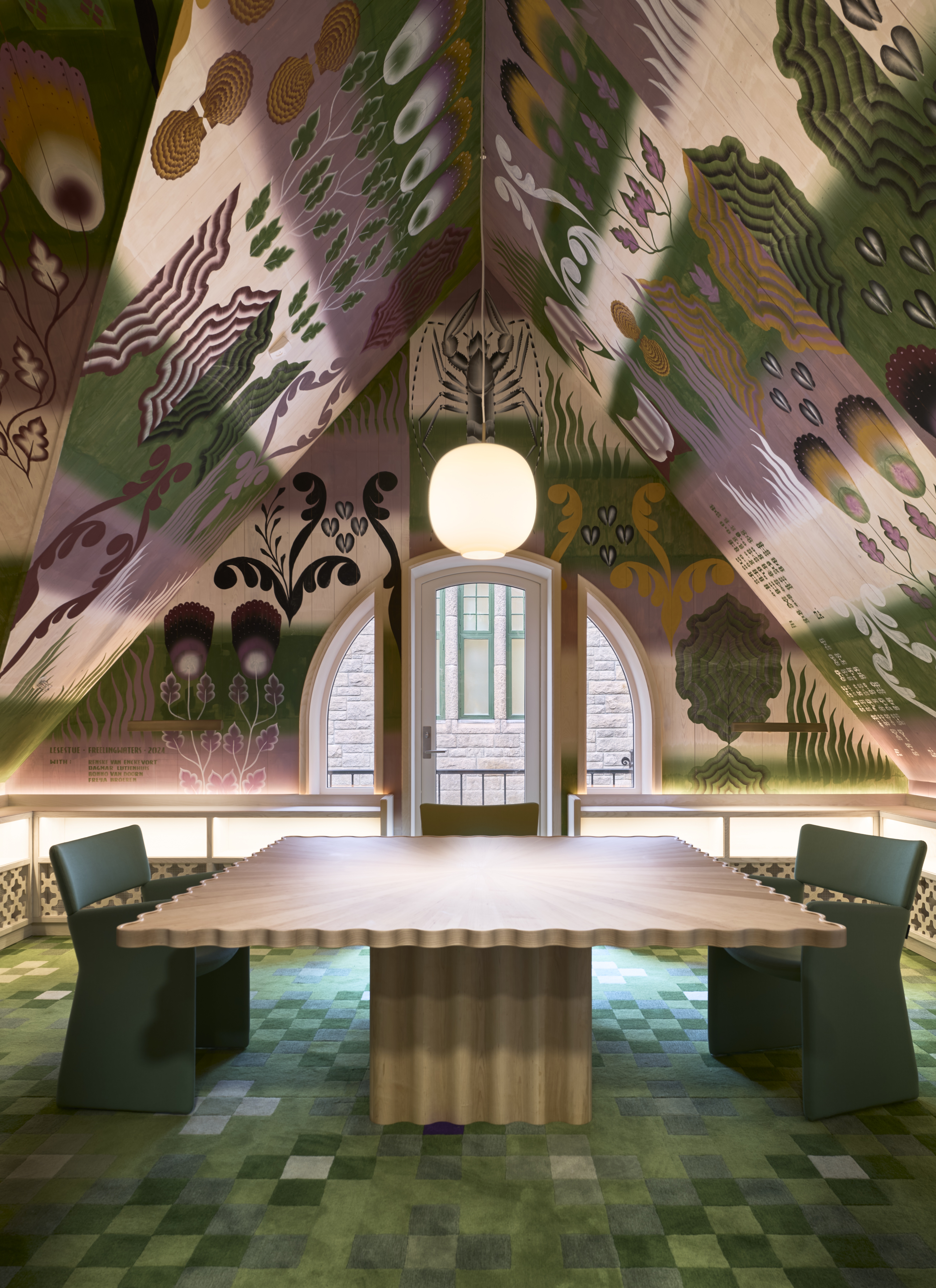

This pleasant immersiveness reaches new heights, both figuratively and literally, on the third floor, where artists Gijs Frieling and Job Wouters' "pop" reimagining of "forgotten Nordic folkloric art" unfolds across the green, gold, and purple-hued witchy murals that provide the backdrop to the reading room's pixelated carpet and custom furniture, and in the top floor lounge, modeled after a 'lived' domestic setting. Elsewhere, like in the project room, "the voluntary absence of color is compensated by the use of materials such as concrete, stainless steel panels, and mesh metal", in a brutalist setting destined to host PoMo Projects; the museum's programming of special events.
To pervade PoMo in its entirety, though, independently of the feel or the aesthetic of its individual sections, is its founders' wish to make it an active part of Trondheim's civic life, leveraging its strategic position to "gather and be inspired by modern and contemporary art," said Monica and Ole Robert Reitan.
Much like Mahdavi and Langdalen's dynamic reinvention of Norum's legendary Art Nouveau landmark, Postcards from the Future, the hub's inaugural group exhibition, reuniting approximately 100 works by 24 international artists from its permanent collection and prestigious international loans, offers a glimpse into the bright new identity of PoMo, cementing the cultural relevance of Trondheim for the years to come.
Postcards from the Future is open at PoMo, Trondheim through June 22







